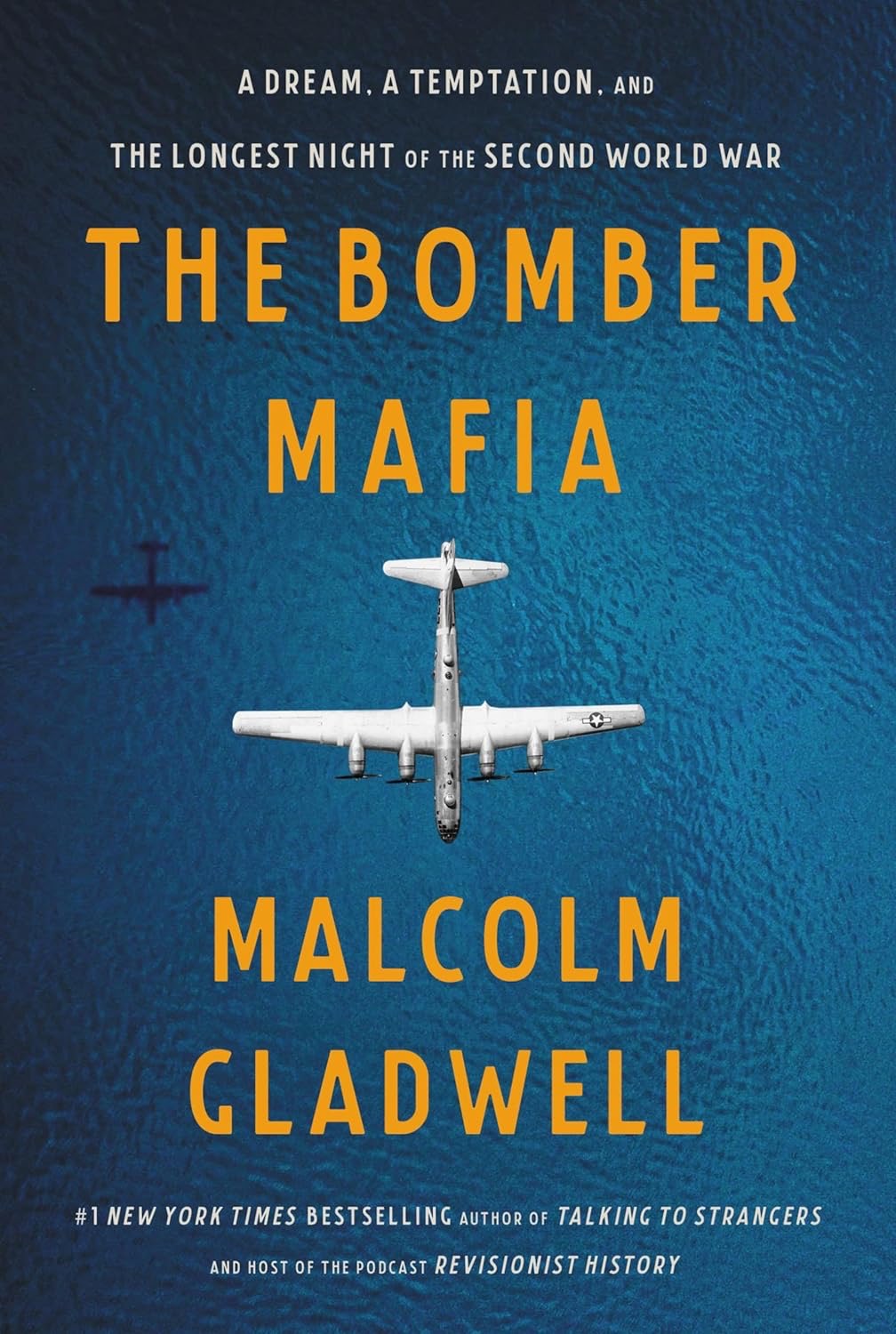The Bomber Mafia is the story of a group of hidden geniuses whom Malcolm Gladwell discovered in plain sight, well-known and openly influential American military officials whose careers began in the interwar period and peaked from World War II into the early 1960s. Although the phrase “Bomber Mafia” traditionally refers to the pre-World War II staff and graduates of the Air Corps Tactical School, Gladwell’s book expands the term to include both kooky tinkerers and buttoned-down military men. Wild, far-seeing mavericks, they understood that the possibilities of air power had only just been breached. They were also, as Gladwell insists at various points, typical Gladwellian protagonists: secluded oddballs whose technical zealotry and shared mission gave them a sense of community that propelled them beyond any station they could have achieved on their own.
The stakes of The Bomber Mafia are no less than World War II and life or death, and yet Gladwell’s narrative is transmitted as seamlessly as the Wall Street or Silicon Valley koans that appear atop LinkedIn profiles, Clubhouse accounts, and Substack missives. Even his statements of objective fact are written to look like something an HSBC junior analyst might tell himself after a bad quarterly review: “Airmen do not typically concern themselves with land-based disasters.” Gladwell has built a career out of making banality seem fresh (“To teach people history we need more statues, not fewer,” he recently explained to the Times), but the latest book is a perhaps untested boundary of moral villainy for him. Drawing a false distinction between the Bomber Mafia and the British and American military leaders who preceded them allows Gladwell to make the case that a few committed brainiacs developed a humane, “tactical” kind of air power that has built the security of the world we live in today.
These were men who, as Gladwell himself likens to MLK, “had a dream” that the skies were going to be the critical battlefield of the future:
The dream that the airplane could revolutionize warfare was based on a massive untested and unproven assumption: that somehow, someone at some point would figure out how to aim a bomb from high in the sky with something close to accuracy.
Gladwell identifies the dream-havers as a revolutionary cadre that included Curtis LeMay, Harold Lee George, Ira Eaker, Carl Norden, Donald Wilson, and Haywood Hansell, to name a few. Their individual contributions range from developing an unwieldy first-effort at a bomb sight (Norden) to successfully executing a firebombing strategy on Japan (LeMay), which Gladwell and the military historians he cites happily credit with ending World War II.
